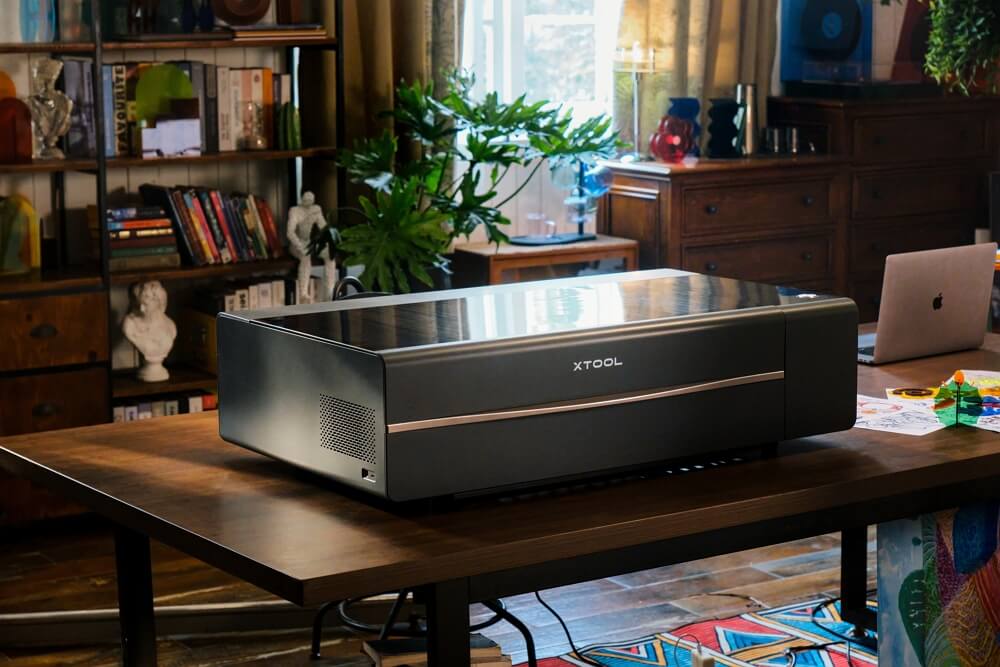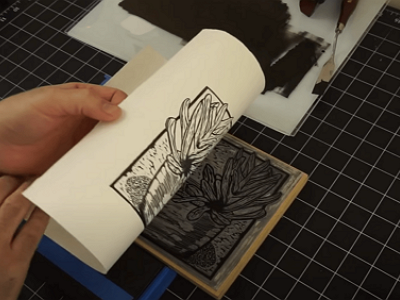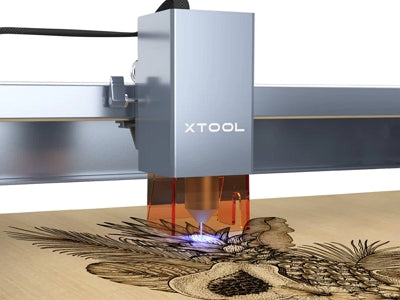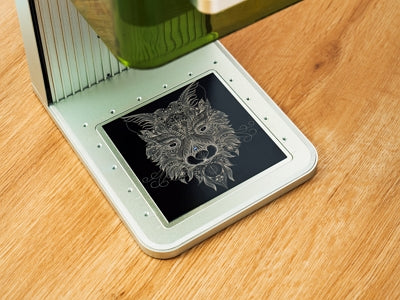Rubber, a hallmark of versatility, graces numerous applications. Think of industrial gaskets, engine seals, or even the humble rubber stamp that marks its impression time and time again. But shaping this flexible, resilient material into the exact forms can be a challenge at times.

To address that, use modern laser cutting and engraving machines. With a beam of light, rubber transforms, assuming intricate patterns and precise shapes. Traditional methods may stumble in the face of rubber’s elasticity, but lasers stand firm, etching with unmatched accuracy and precision.
So, where to start on this journey of precision and design? Look no further. This guide serves as your compass. We will direct you through the nuances, techniques, and wonders of laser processing on rubber.
In This Article
- How Do Laser Cutting And Engraving Rubber Work?
- What Rubber Is Suitable For Laser Cutting And Engraving?
- Laser Cut And Engraved Rubber Applications
- Best Laser Engraver for Rubber
- FAQs of Laser Cutting Rubber
How Do Laser Cutting And Engraving Rubber Work?
Lasers are an intense, focused beam of light with the ability to cut through different materials including rubber. Imagine a laser cutter as a super-precise pencil. However, instead of drawing, it burns or melts away the rubber, bit by bit. For cutting, it slices the surface cleanly. For engraving, it delicately burns the surface, creating designs.

CO2 laser beams are best for cutting rubber. First, because they emit a specific wavelength that it absorbs exceptionally well. Secondly, since rubber is sensitive to heat, the CO2 laser cutter provides a controlled beam that can precisely melt or vaporize rubber without unnecessary damage.
To cut rubber with a laser cutter, a digital design (made with any design software) is fed into the laser system. It guides the laser beam and provides it with the path for moving on the rubber. You may choose to cut or engrave it based on the job requirements.
What Rubber Is Suitable For Laser Cutting And Engraving?
Rubber exists in various forms, with over ten distinct types. While there’s the classic natural rubber, several synthetic versions also exist. However, the pressing query, is which of these rubbers is laser-friendly? Based on current industry standards, the following three rubbers are prime candidates for laser cutting:
1. Natural Rubber
Harvested directly from rubber trees, this is the most traditional form of rubber. Due to its purity and consistency, it responds predictably and cleanly to laser cutting. It is an excellent choice when precision is crucial.
2. Silicone Rubber
This synthetic rubber is not only flexible but also heat-resistant due to the presence of Si-O bonds. This makes it another ideal candidate for laser cutting. Its smooth, consistent texture ensures that cuts are clean, reducing the chances of rough edges or irregularities.
3. Nitrile Rubber
Valued for its resistance to oils and chemicals, nitrile rubber also possesses a consistent structure conducive to laser cutting. It’s often chosen for industrial applications, particularly gaskets, and fuel hoses, where both the properties of nitrile and the precision of laser cutting are needed.
Desired Rubber Thickness For Laser Cutting
Lasers offer a remarkable level of precision, yet they have their boundaries. Typically, laser cutters can navigate rubber thicknesses up to 6 mm. But here’s a tip: many laser cutter manufacturers offer their own specially formulated materials, optimized for their machines. Thus, before diving into rubber cutting, it's wise to get insights directly from the manufacturer.
For instance, take xTool. We offer a laser-ready rubber stamp sheet that's 0.09'' (around 3 mm) thick. This sheet harmonizes seamlessly with all our equipment. While some of our devices (like xTool P2) can handle thicker materials, this particular rubber thickness ensures optimal performance and longevity for our machines
Laser Power for Cutting Rubber
Traditionally, laser machines find their stronghold in industries, mainly for slicing through metals, demanding higher power. But rubber, being softer than metals, doesn't call for such intensity. In fact, a laser cutter ranging between 30 to 80 W is ample to tackle any of the rubber types previously mentioned.
Laser Cut And Engraved Rubber Applications
Rubber has always been an integral part of numerous industries. The laser cutting further transforms it. Rubber gains unparalleled sharpness in design, vibrancy in detail, and an exceptional finish that traditional methods can’t match. This gives birth to products that are functional and aesthetically superior.
Here’s a list of some major applications of laser engraving rubber:
1. Rubber Stamps

Laser engraved Rubber Stamp Made with P2 ©xTool Projects
When it comes to customization, nothing beats the prowess of laser engraved rubber stamps. With natural rubber as a starting material, you can craft stamps with unparallel detail. This allows for intricate designs, from company logos to detailed graphics, ensuring sharp imprints every single time.
Whether it’s for official documents, crafting, or any form of artistic expression, laser engraved rubber stamps have redefined the standards of stamping quality.
2. Personalized Watch Bands

Silicone rubber comes to the rescue when personalizing watch bands. This material, with its flexibility and durability, serves as the perfect canvas.
Laser engraving dives into the silicone, crafting unique patterns, names, or even special dates, turning a standard watch band into a personal statement piece.
3. Engraved Baking Mats

Apart from watch bands, silicone rubber bands are a favorite in contemporary kitchens. These mats, cut and sometimes engraved with logos or measurements using lasers, provide a non-stick surface for baking.
4. Rubber Seals and Gaskets

Laser Cut Rubber Seals ©LaserCut4
Neoprene-based rubber seals, precision-cut by lasers, play the pivotal role of ensuring no unwanted leaks in machinery. Every cut is exact, ensuring a snug fit, whether in household appliances or industrial machines.
Best Laser Engraver for Rubber
Numerous industrial laser cutters for rubber exist, many of which are expensive and sizable. However, for a sleek and compact desktop laser solution, the xTool P2 stands unrivaled as the top pick.
xTool P2: The Best Rubber Engraver

Launched in April 2023, xTool P2 is the latest innovation from xTool, a leading brand in digital crafting. This smart desktop laser cutting machine promises to be a game-changer for both avid crafters and small businesses.
Some highlighting features that make it one of the best laser engravers on the market are:
- Laser Strength: The xTool P2 comes with a robust 55W CO2 laser, positioning it among the top laser cutters suitable for household use. It can cut various non-metals including rubber. It can cut a 20 mm acrylic sheet or 18 mm black walnut in one pass. This powerful beast boasts an engraving speed of 600 mm/s.
- Spacious Bed Size: Its spacious 26.8 x 14.2 inches ensures you have plenty of room for diverse projects. It expands equally well in the third dimension i.e. height. With a rising base, it offers a maximum height of 8.4 inches, enabling you to engrave thicker objects.
- Innovative Curved Engraving: This machine stands out with its capability to engrave on curved materials. It intelligently creates a 3D model of the object and adjusts the laser’s focus during the process, ensuring precision on uneven surfaces.
- Smart Passthrough Feature: The device introduces an automatic passthrough which is ideal for managing large material lengths.
- High-Resolution Dual Cameras: Two 16MP cameras are integrated for unparalleled accuracy. The panoramic one offers a comprehensive view of the project, while the other close-range camera meticulously tracks the laser’s movement for pinpoint engraving.
- Safety First: The xTool P2 prioritizes user safety. The laser filtering on the top protects your eyes while an automatic lock activates when the engraving begins and stays locked until the end. There’s also an emergency button for immediate shutdown when required.
Conclusion
The fusion of traditional materials like rubber with modern laser technology is pushing the boundaries of design and functionality. Whether it’s the impeccable detail of a rubber stamp or a precision fit of a gasket, the benefits of this synergy are everywhere.
For those who need a powerful tool to redefine their crafts, we recommended xTool P2. Its use case extends beyond rubber; it can cut through multiple materials including most rubber, wood, acrylic, leather, paper, etc.
FAQs of Laser Cutting Rubber
Can you cut rubber with a CO2 laser?
Yes, a CO2 laser can effectively cut rubber. Natural and some synthetic rubber types respond well to CO2 lasers, which allow for clean and precise cuts. It is a preferred and the most common method in many industries for laser cutting rubber.
Will a diode laser cut rubber?
Diode Laser may not be the first choice, but yes it can engrave and cut rubber. However, being low-powered to CO2 lasers, it typically handles thin rubber sheets, ideally 2 to 2.5 mm.
Can you laser cut silicone rubber?
Yes, silicone rubber is laser-friendly. CO2 lasers, in particular, can efficiently cut and engrave silicone, making it ideal for personalized items like watch bands or baking mats. The process yields clean edges and detailed designs.
Can fiber laser cut rubber?
Fiber lasers excel at cutting metals, but when it comes to non-metallic materials like rubber, wood, and acrylic, they aren’t the first choice. Their wavelength isn’t as well-suited and is not readily absorbed by most types of rubber. For rubber applications, CO2 lasers typically deliver better results.
Related Articles

Block Printing for Beginners: How-To & DIY Ideas

4 Types of Printmaking Techniques



